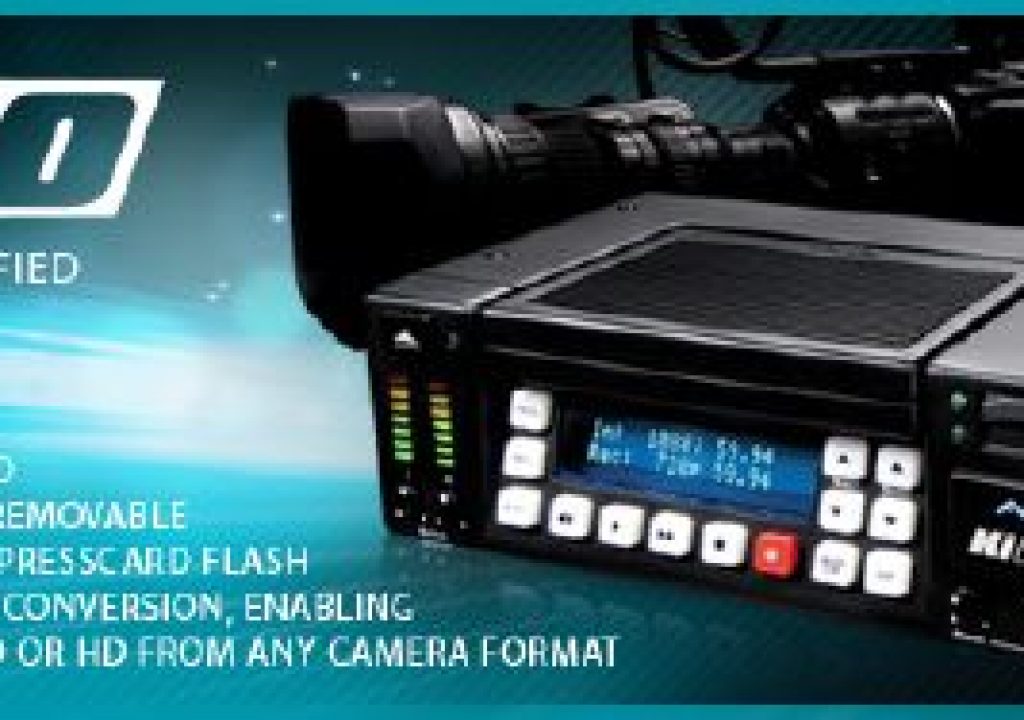
At NAB 2009, AJA announced the KiPro, which allows direct recording of Apple’s revered ProRes422 or ProRes422(HQ) in the field, without any laptop, from any SD or HD camera or vision mixer (“switcher”). I consider the KiPro to be a natural extension of AJA’s IoHD, and my only surprise is why AJA waited so long to release such a product. The KiPro has just about any type of input and output that we could possibly imagine, is controllable wirelessly from a laptop or iPhone, and records to two types of removable media: either ExpressCard34 (the type that fits into your MacBookPro) or its own Storage Module.
The advantages of recording directly to ProRes422 or ProRes422(HQ) are fairly obvious, since these two códecs are 10-bit, full raster 720p (1280×720) or 10-bit, full raster 1080 (1920×1080), with true 4:2:2 color sampling, and are immediately editable in Apple’s Final Cut Pro (or even with iMovie 09 if the ProRes422 códec has been installed on the machine). The file sizes of ProRes422 and ProRes422(HQ) are certainly higher than those used in most onboard camera códecs, but for high-end EFP, many producers will gladly accept that. In addition to the HD specs mentioned, the KiPro can also accept SD signals, and either record them as ProRes422 or ProRes422(HQ) in SD, or upscale to HD. When dealing with analog standard definition video, KiPro can properly handle PAL, NTSC with 7.5 ire setup, or NTSC without 7.5 ire setup, depending upon the source and destination. KiPro can also handle realtime cross conversion in any direction between 720HD and 1080HD. This is very welcome!
The KiPro’s front panel
KiPro’s video inputs:
- SD and HD-SDI (1 BNC) with embedded 8-channel audio
- HDMI with embedded 2-channel audio
- SD/HD component or RGB (3 BNCs)
KiPro’s video outputs (all simultaneously active):
- SD and HD-SDI (1 BNC) with embedded 8-channel audio
- HDMI with embedded 8-channel audio
- Composite video (1 BNC)
- SD or HD component or RGB (3 BNCs)
KiPro’s additional audio inputs (beyond embedded audio mentioned above):
- 2 channel balanced input (2 XLR, line level, microphone level, with optional 48-volt phantom power)
- 2 channel unbalanced input (2 RCA)
KiPro’s additional audio outputs (beyond embedded audio mentioned above) (all simultaneously active):
- 2 channel balanced output (2 XLR, line level)
- 2 channel unbalanced output (2 RCA)
KiPro’s networking ports
- 10/100/1000BaseT Ethernet (RJ-45)
- 802.11g WiFi
- Embedded webserver for remote control
Camera control
Your camera can control the KiPro to put it in record or pause, either via IEEE-1394 (FireWire) or via a connection to the camera’s lens, using AJA’s Lens Tap Cable Accessory.
Electrical power
The KiPro can be powered by battery via a 4-pin XLR, or with the included universal AC adaptor.
AJA says that the KiPro will be available in June 2009 for US$3995 including a Storage Module and a universal AC adaptor. Compared with the IoHD (which has been on the market for almost two years already), the KiPro costs US$500 more, but doesn’t require a (minimum) US$2000 MacBookPro. The KiPro will certainly simplify field production at 10-bit, full-raster HD, no matter what camera you connect.

